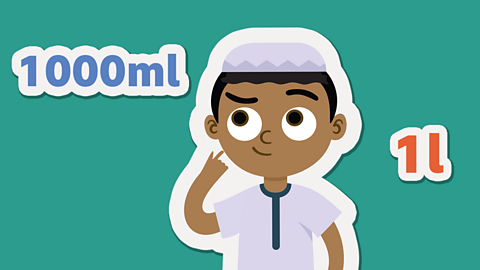When do you use grams?
When we want to find the mass of small, everyday objects, we measure in grams. Grams is shortened to ÔÇśgÔÇÖ.
Here are some objects that you might be able to find around your kitchen. They are small objects and can be measured in grams.
Let's look at how much they weigh:
- An egg weighs 60 grams or 60 g.
- An orange weighs 250 grams or 250 g.
- A bottle of milk weighs 800 grams or 800 g.

How do we measure the mass of objects?
One way to measure the mass of objects is to use balance scales.
A balance scale works by placing the object you want to weigh on one side and adding gram masses to the other side until the scales are level.
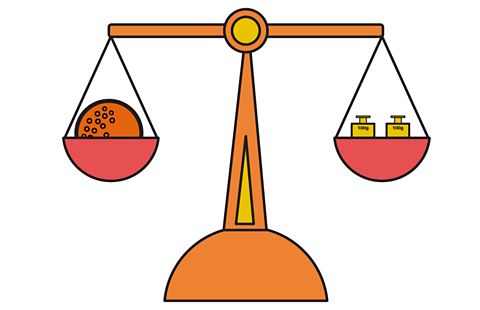
Masses for weighing usually come as 1g, 5g, 10g, 20g or more!
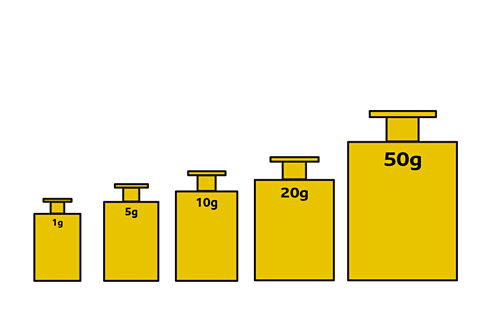
There are other types of scales you can use to measure mass.

You can also use a set of scales showing the mass on a dial with a pointer or digital scales showing the mass as a number.
Now let's have a look at some questions involving measuring in grams.
Example 1

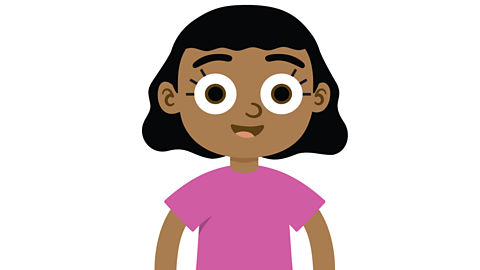
A carrot weighs 50 g. A banana weighs 150 g. How much heavier is the banana?
150 - 50 = 100
The banana is 100 g heavier than the carrot, because 150 is 100 more than 50.
How many carrots weigh the same as the banana?
150 = 50 + 50 + 50
So the banana is the same weight as 3 carrots.

Example 2


A tin weighs 200 g. A tin and an apple together weigh 360 g.
How heavy is the apple?
You need to subtract the weight of the tin from the combined weight of the apple and the tin.
360 ÔÇô 200 = 160 g.
So the apple is 160 g.

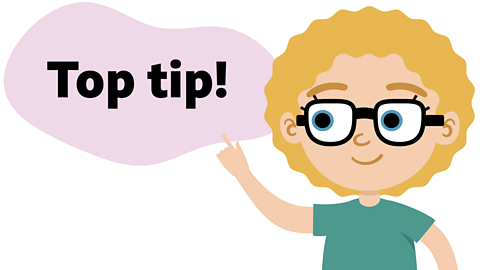
Top tip
Always make sure scales are set to zero before weighing!

Activity
Practise measuring mass in grams with this quiz.
NEW! Play Karate Cats Maths - the winter update. game
Deck the dojo in the Christmas update and unlock festive outfits for your Karate Cats. Available for a limited time only!

More on Measuring
Find out more by working through a topic
- count7 of 10
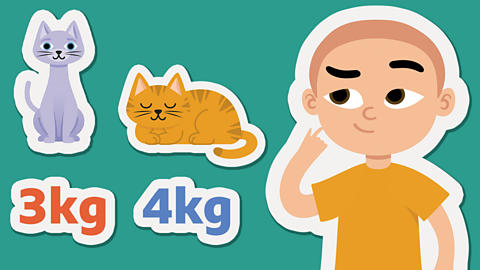
- count8 of 10
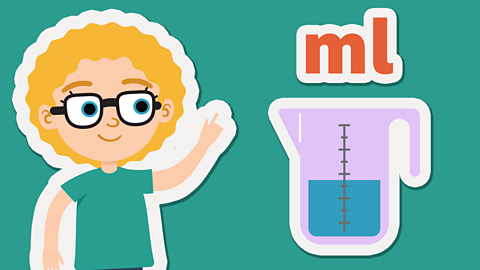
- count9 of 10
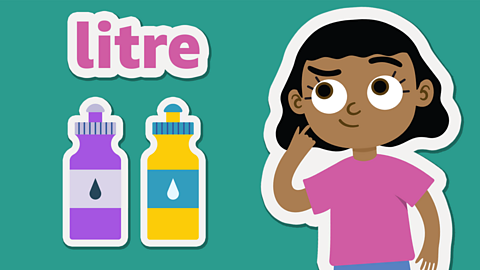
- count10 of 10
